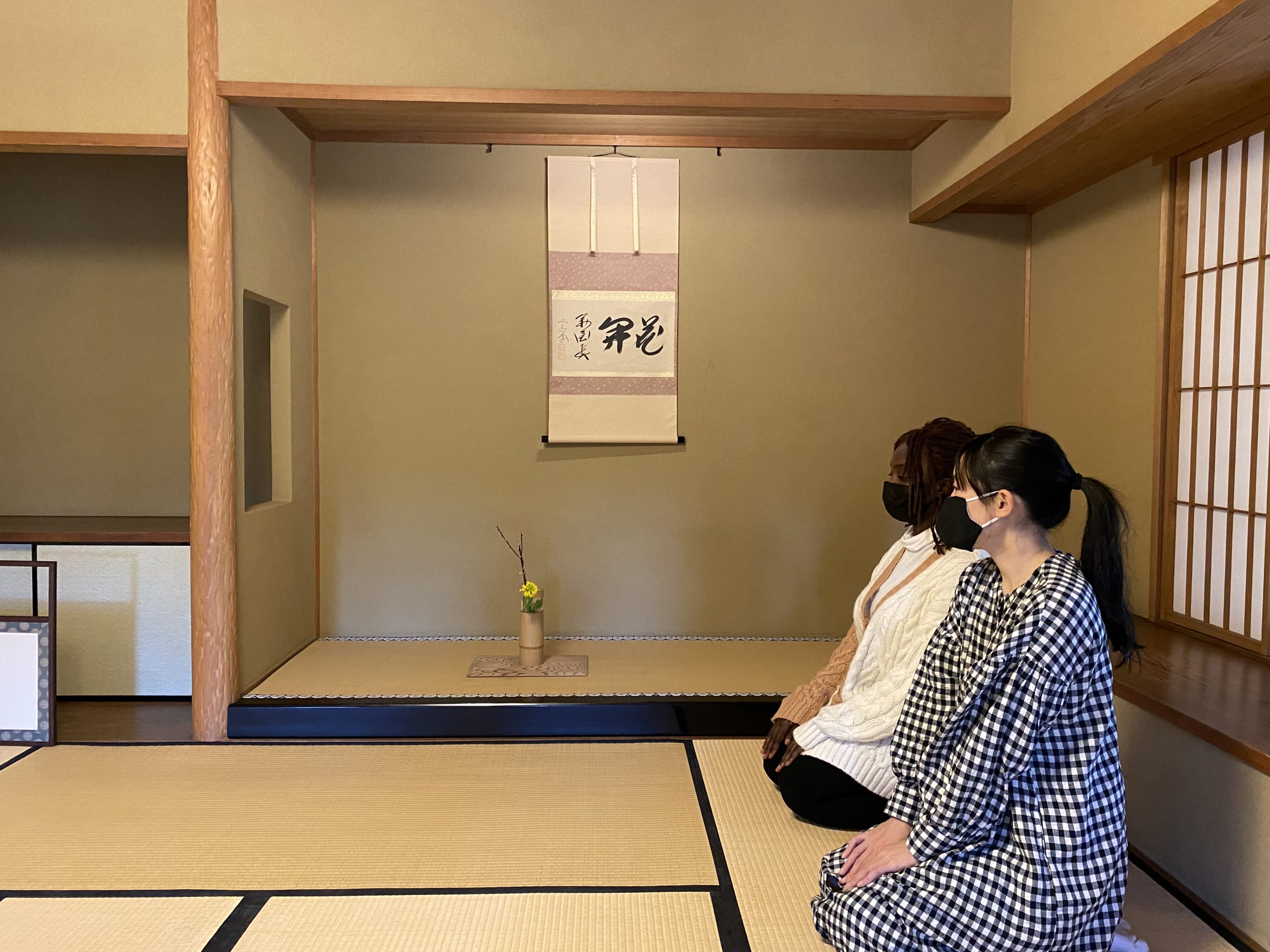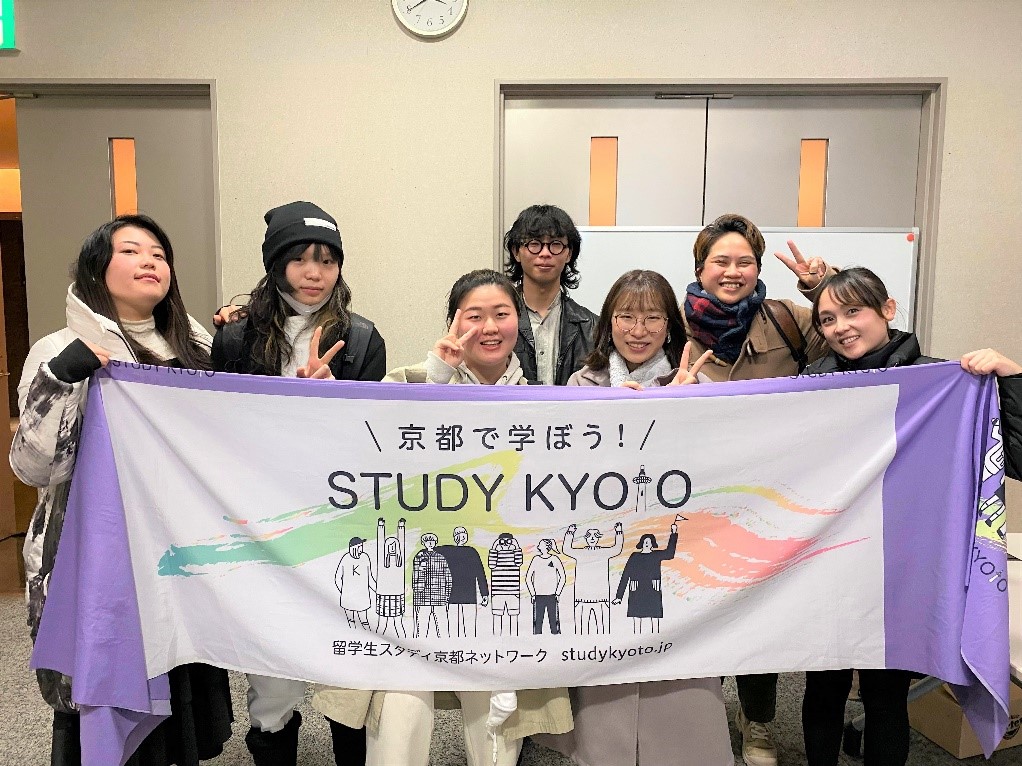The cost of student life in Kyoto, Japan you don’t hear about!
2024.05.24
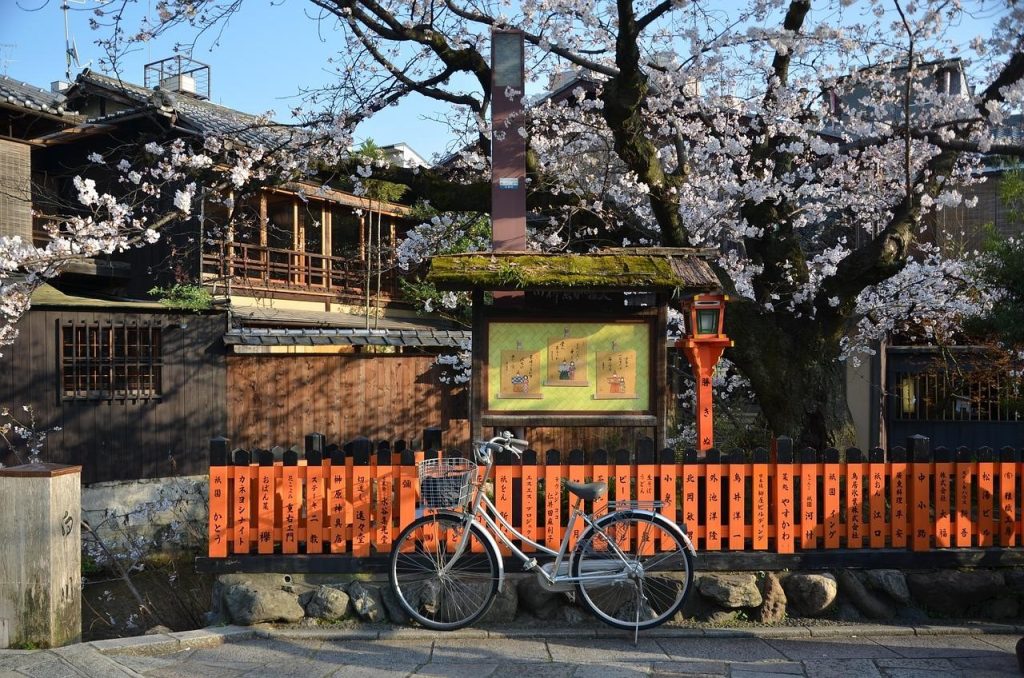
Famous for its sightseeing locales and cultural heritage, Kyoto is also known as a “city of universities”/”city of students” for its large number of universities, filling the city with the energy of students from across Japan and the world. Students often choose Kyoto for their study abroad destination because the schools or universities at which they want to study are here, or because of the tranquil environment where traditional Japanese culture is so close at hand. In comparison to big cities like Tokyo or Osaka, Kyoto’s cost of living is also a bit cheaper, which allows many international students to be able to focus on their studies.
When planning to study abroad, you’ll need to be sure you know what monthly expenses you’ll have, in addition to your tuition fees. In this article, we’ll take a look at the actual cost of living for an international student in Kyoto, based on the Kyoto International Student Satisfaction Survey that Study Kyoto conducted in 2023 (the survey had about 1,000 respondents), and interviews with students in Kyoto. We’ll look at the details by category, including housing, food, transportation, health insurance and so on, so if you’re considering studying in Kyoto, you’ve come to the right place to find the info you need!
1.Housing Costs
・Rent
If you’re a student who hasn’t yet arrived in Japan, you’re sure to wonder most about what kind of place you’ll live in. In Kyoto, international students can choose between options like these:
1)Dorms offered by your language school or university
2)Renting an apartment via a real estate agency
3)International student dorms or share houses managed by the government or NGOs
4)Homestay or other option
According to the 2023 Kyoto International Student Satisfaction Survey, about 70% of students responded that they live in apartments rented via real estate agencies, and 25% responded that they live in school dorms or other rental accommodations offered by their schools. School dorms often have fixed time periods in which students can reside there, so many students start out living in a dorm, and then start looking for an apartment once they feel more settled. Study Kyoto has another article with useful information on finding an apartment in Kyoto, so be sure to take a look!
Read more: How to Rent an Apartment in Kyoto, Japan: A Guide for International Students
So, just how much are international students in Kyoto paying for rent every month? According to the Satisfaction Survey, at 31%, the largest proportion of students responded that they pay 40,000 yen or less in rent each month. Other responses included 19% paying 40,000 – 50,000 yen, 21% paying 60,000 – 70,000 yen, and 17% of respondents reported paying more than 70,000 yen.
How much students pay in rent depends on the type of housing they live in (dorm, rental apartment, share house, etc.), where it’s located, how old the building is, etc. In general, though, if you compare types of housing, the order of affordability is often dorms < share houses < apartments < homestay. Homestay is often the most expensive option, but it also often includes your energy bills and food costs, and includes the benefit of immersing yourself with a Japanese family who knows the local area well. To start with, try determining your budget for your everyday expenses, and what you can afford based on your lifestyle between the options.
When you look for housing, you should also take note of Japan’s unique categories for different types of housing complexes. Even within this same category, you’ll find different prices between manshon (apartments with reinforced concrete construction, usually in buildings with three or more floors) and apaato (mainly apartments with wooden or steel-frame construction, two or three floors). Mansion-types tend to be more fully-equipped buildings with security measures, and tend to be on the more expensive side. Apaato-types, on the other hand, are generally more affordable, both in terms of rent and management fees.
Of the 2023 Kyoto International Student Satisfaction Survey respondents that said they lived in school dorms, 57.4% said that their monthly rent was 50,000 yen or less. 47.1% of those that live in apartments reported rent less than 50,000 yen, so you can see from their responses that school dorms are generally a cheaper option.
Read more: A Beginner’s Guide to Living Alone in Japan (Currently Japanese only)
・Utility Fees
While the amount you pay for rent will vary quite a bit depending on your lifestyle and economic situation, the amount you’ll spend on utilities (water, gas and electricity) as a single person shouldn’t be that different from other people. Amongst the different international students we interviewed, the average they paid for utilities was around 6,000 – 8,000 yen per month on average. There are some housing options that may include utility fees as a part of your rent, which is a good way for international students to lower their expenses.
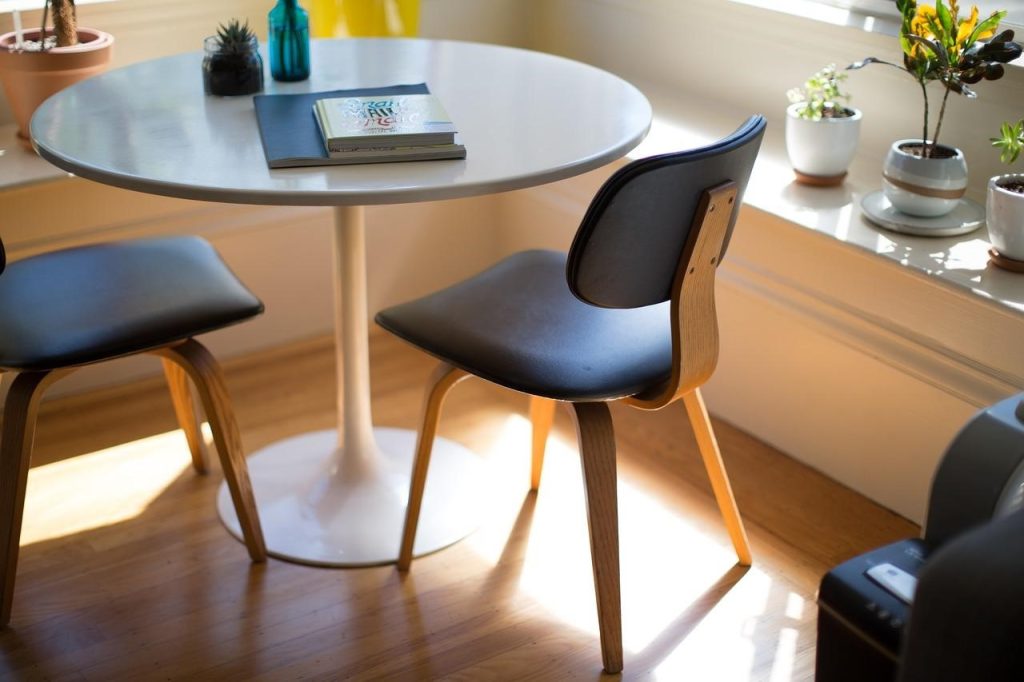
2. Food Prices
There are many restaurants aimed at students near university campuses in Kyoto that offer sizable meals at a low price. For example, the lunch sets in the cafés and restaurants nearby Kyoto University have an average price of about 750 – 900 yen as of March, 2023.
There are also many menu items offered at extremely reasonable prices at on-campus cafeterias. In the case of Kyoto University’s cafeteria, lunch will typically cost you between 400 – 500 yen (as of March, 2024).
Even students who aren’t confident in their home cooking abilities can use these student-friendly restaurants and their school cafeterias to save money on food.
Still, if you really want to keep expenses to a minimum, cooking your own meals is still the best option. We asked international students who cook for themselves 5 days a week or more how much they spent, and they reported monthly food expenses of around 35,000 yen.
According to the Japanese Ministry of Internal Affairs and Communications’s February 2024 survey on retail prices, food prices in Kyoto are as follows: 1 bag of rice (5 kg) 2,258 yen, loaf of bread (cut into 6 slices) 169 yen, 1 pack of eggs (10 eggs) 302 yen, 1 carton of milk (1,000 ml) 244 yen, chicken (per 100 g) 147 yen), cabbage (1 kg) 181 yen.
It might be tough to make every meal yourself, but if you combine it with cheap eating-out options like your school cafeteria, you’ll be able to keep your food expenses down while still enjoying yourself.
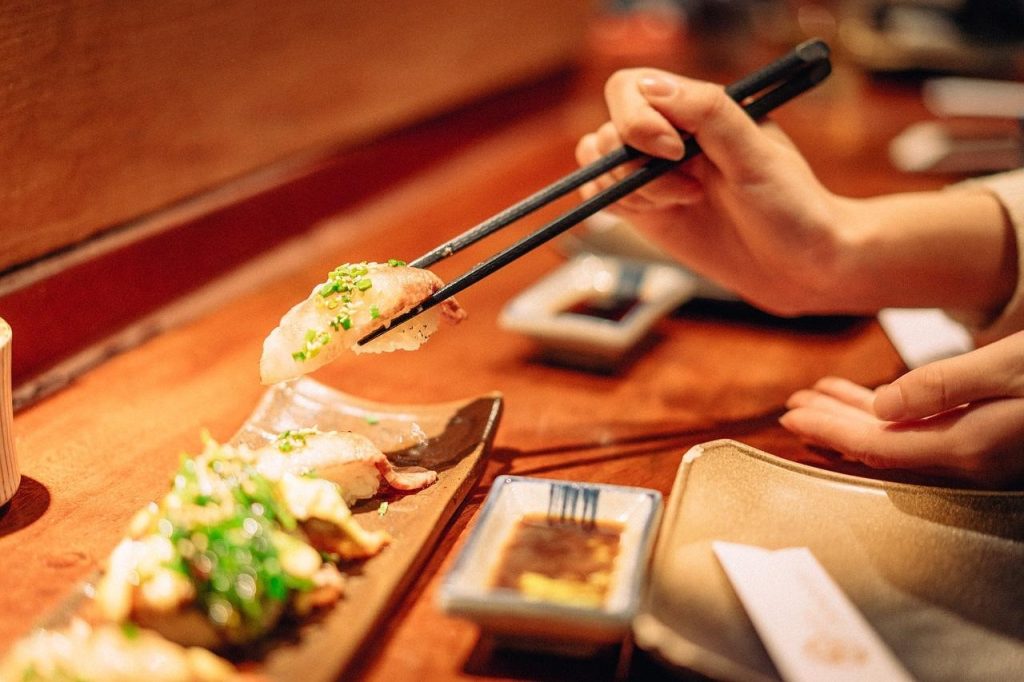
3. Transportation Fees
Kyoto’s public transportation includes trains and buses, but the Kyoto City bus, which runs along many different streets, will be your primary means of transportation on a daily basis. Whether you travel by bus or train to commute between home and school every day, we suggest getting a student commuter pass (tsugaku teikiken). Incidentally, as of March 2024, the fare for Kyoto City buses within the Kyoto City flat fare section is 230 yen, and a commuter pass costs 8,280 yen for one month, or 44,710 yen for six months. You can also ride the bus a little more cheaply by using discount tickets if you just ride occasionally, like to a part-time job or out just to go out. You can find more information on bus ticket prices and commuter passes on the Kyoto City Transportation Bureau website.
University Student Commuter Passes: https://www.city.kyoto.lg.jp/kotsu/page/0000019526.html
City Bus Fare: https://www.city.kyoto.lg.jp/kotsu/page/0000240682.html
Many international students, however, live in apartments or dorms close to campus, and many of these students use bicycles to get around everyday. You won’t have to pay any transportation fees with a bicycle, and you’ll get some exercise, too, so you can kill two birds with one stone! We have an article with information on how to buy a bike in Kyoto and the transportation rules you’ll need to know, so be sure to check it out:
The Bicycle-Friendly City of Kyoto
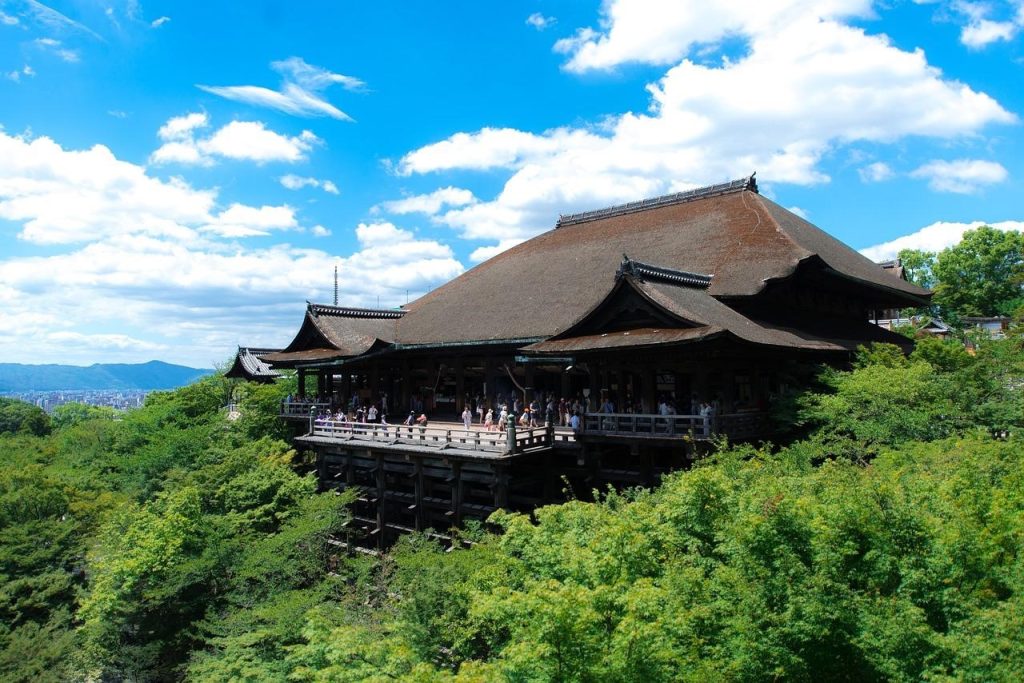
4. Phone & Internet Fees
・Cell phone fees
In Japan, the major cell phone providers are NTT docomo, au (KDDI), and Softbank. The benefit of using one of the major carriers is that you’ll get a strong signal and good quality phone service, as well the reassurance that you’ll have access to in-person support, as there are many shops for these carriers across Japan. The disadvantage is that your monthly bill will be relatively high. According to a November 2023 MMD Research Institute survey, the average monthly cost for users of the three major carriers above is 9,498 yen.
If you’re one of those who wants to keep their cell phone bill down to lower their expenditure even a little, you can also choose a low-cost SIM card. Since the operators of low-cost SIM cards don’t have their own communication network and provide cell phone services by borrowing lines from major carriers, you can get much lower fees than major carriers. Contract periods are also shorter than those of major carriers (usually one year), which makes it easier for international students, even those studying abroad for just one year, to sign up for cell service.
According to the November 2023 MMD Research Institute survey, low-cost SIM users pay 4,258 yen per month on average, which is less than half of the cost of the three major carriers above. There are a variety of low-cost SIMs available in Japan, so take a look, and choose one that fits your needs.
・Wifi Fees
For those for whom a SIM card alone isn’t enough, or those who want to use their computer at home can also choose to sign up for wifi. There are three types of Wi-Fi: optical, home router, and pocket Wi-Fi.
1. Optical: Wifi speed is relatively fast, and the connection is stable. To install it, you’ll need to contact the provider in advance for them to set it up in your home. Fees vary from provider to provider, but you can expect to pay somewhere between 4,000 – 6,000 yen a month.
2. Router: This option doesn’t require specialist installation: you use wifi just by placing and plugging in the router. This option is mostly appealing because it’s easy and doesn’t require installation, so it’s a good option for people who move house a lot. Again, fees will vary depending on the service provider, but prices will generally start around 3,000 yen a month.
3. Pocket Wifi: This is a type of wifi you can carry around with you outside the house. Unlike optical fibers or a router at home, you won’t have unlimited usage, but you will be able to sign a relatively inexpensive contract.
If you’re in a student dorm, on the other hand, generally, wifi service will be offered. Some dorms will charge you separately for wifi each month, though, so be aware that these fees will depend on the particular dorm.
Read more: What to Look Out For When Renting Wi-Fi in Japan: A Guide for International Students

5. National Health Insurance
In Japan, international students are required to sign up for national health insurance (kokumin hoken). When you sign up, you’ll have to pay a monthly insurance fee, but most of your medical fees at doctor’s visits will be covered by insurance, and you’ll only have to pay 30% of the fees yourself. International students with low incomes (income from part-time jobs, etc.) from the previous year are eligible to apply for a reduction or exemption, which can help to reduce their monthly health insurance premiums. According to the international students we spoke with, the amount they paid in health insurance each month was about 1,000 – 2,000 yen.







